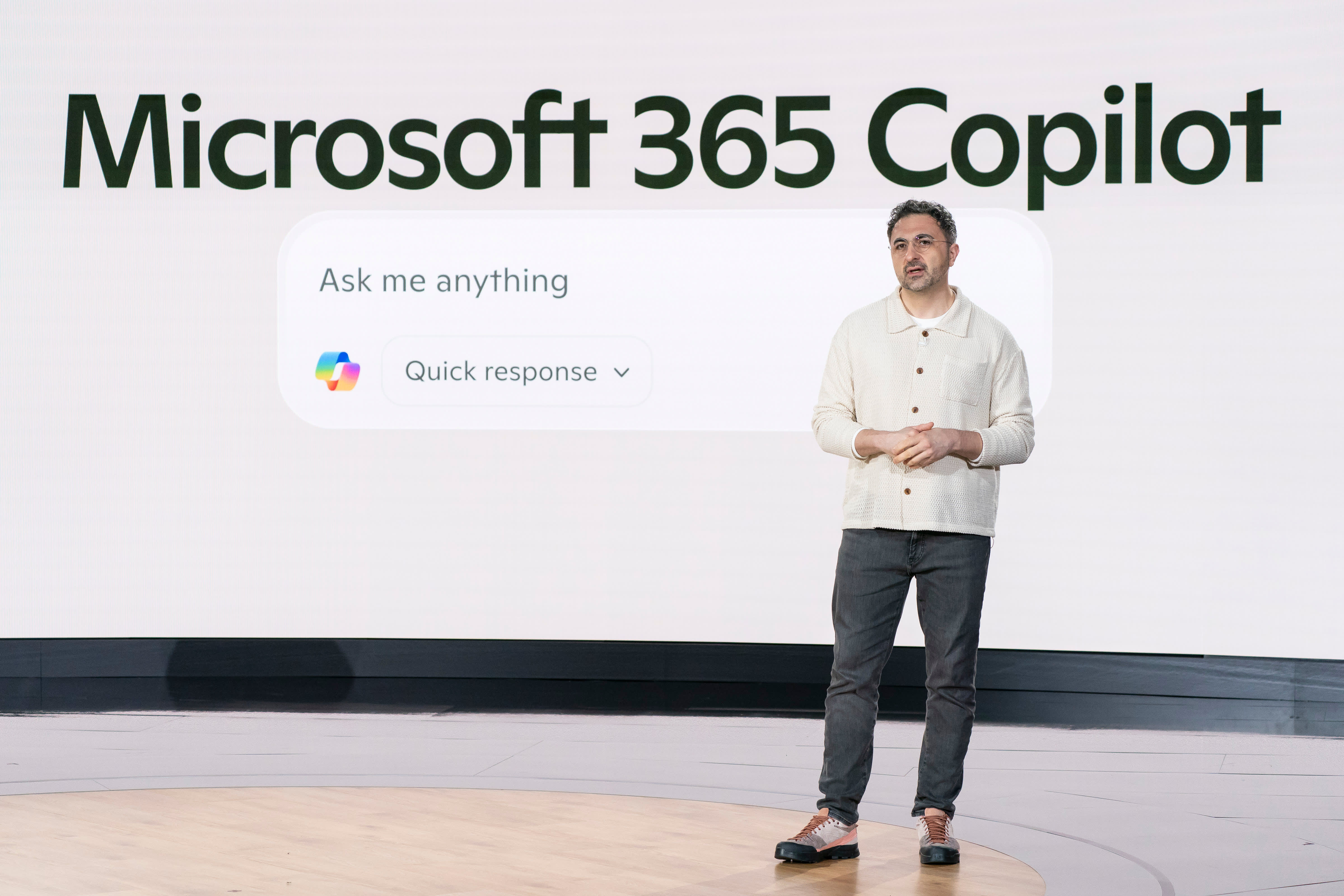
Microsoft owns lots of Nvidia graphics processing units, but it isn’t using them to develop state-of-the-art artificial intelligence models.
There are good reasons for that position, Mustafa Suleyman, the company’s CEO of AI, told CNBC’s Steve Kovach in an interview on Friday. Waiting to build models that are “three or six months behind” offers several advantages, including lower costs and the ability to concentrate on specific use cases, Suleyman said.
It’s “cheaper to give a specific answer once you’ve waited for the first three or six months for the frontier to go first. We call that off-frontier,” he said. “That’s actually our strategy, is to really play a very tight second, given the capital-intensiveness of these models.”
Suleyman made a name for himself as a co-founder of DeepMind, the AI lab that Google bought in 2014, reportedly for $400 million to $650 million. Suleyman arrived at Microsoft last year alongside other employees of the startup Inflection, where he had been CEO.
More than ever, Microsoft counts on relationships with other companies to grow.
It gets AI models from San Francisco startup OpenAI and supplemental computing power from newly public CoreWeave in New Jersey. Microsoft has repeatedly enriched Bing, Windows and other products with OpenAI’s latest systems for writing human-like language and generating images.
Microsoft’s Copilot will gain “memory” to retain key facts about people who repeatedly use the assistant, Suleyman said Friday at an event in Microsoft’s Redmond, Washington, headquarters to commemorate the company’s 50th birthday. That feature came first to OpenAI’s ChatGPT, which has 500 million weekly users.
Through ChatGPT, people can access top-flight large language models such as the o1 reasoning model that takes time before spitting out an answer. OpenAI introduced that capability in September — only weeks later did Microsoft bring a similar capability called Think Deeper to Copilot.
Microsoft occasionally releases open-source small-language models that can run on PCs. They don’t require powerful server GPUs, making them different from OpenAI’s o1.
OpenAI and Microsoft have held a tight relationship shortly after the startup launched its ChatGPT chatbot in late 2022, effectively kicking off the generative AI race. In total, Microsoft has invested $13.75 billion in the startup, but more recently, fissures in the relationship between the two companies have begun to show.
Microsoft added OpenAI to its list of competitors in July 2024, and OpenAI in January announced that it was working with rival cloud provider Oracle on the $500 billion Stargate project. That came after years of OpenAI exclusively relying on Microsoft’s Azure cloud. Despite OpenAI partnering with Oracle, Microsoft in a blog post announced that the startup had “recently made a new, large Azure commitment.”
“Look, it’s absolutely mission-critical that long-term, we are able to do AI self-sufficiently at Microsoft,” Suleyman said. “At the same time, I think about these things over five and 10 year periods. You know, until 2030 at least, we are deeply partnered with OpenAI, who have [had an] enormously successful relationship for us.
Microsoft is focused on building its own AI internally, but the company is not pushing itself to build the most cutting-edge models, Suleyman said.
“We have an incredibly strong AI team, huge amounts of compute, and it’s very important to us that, you know, maybe we don’t develop the absolute frontier, the best model in the world first,” he said. “That’s very, very expensive to do and unnecessary to cause that duplication.”
WATCH: Microsoft Copilot beginning of a seismic shift in AI integration, says Microsoft AI CEO Suleyman









